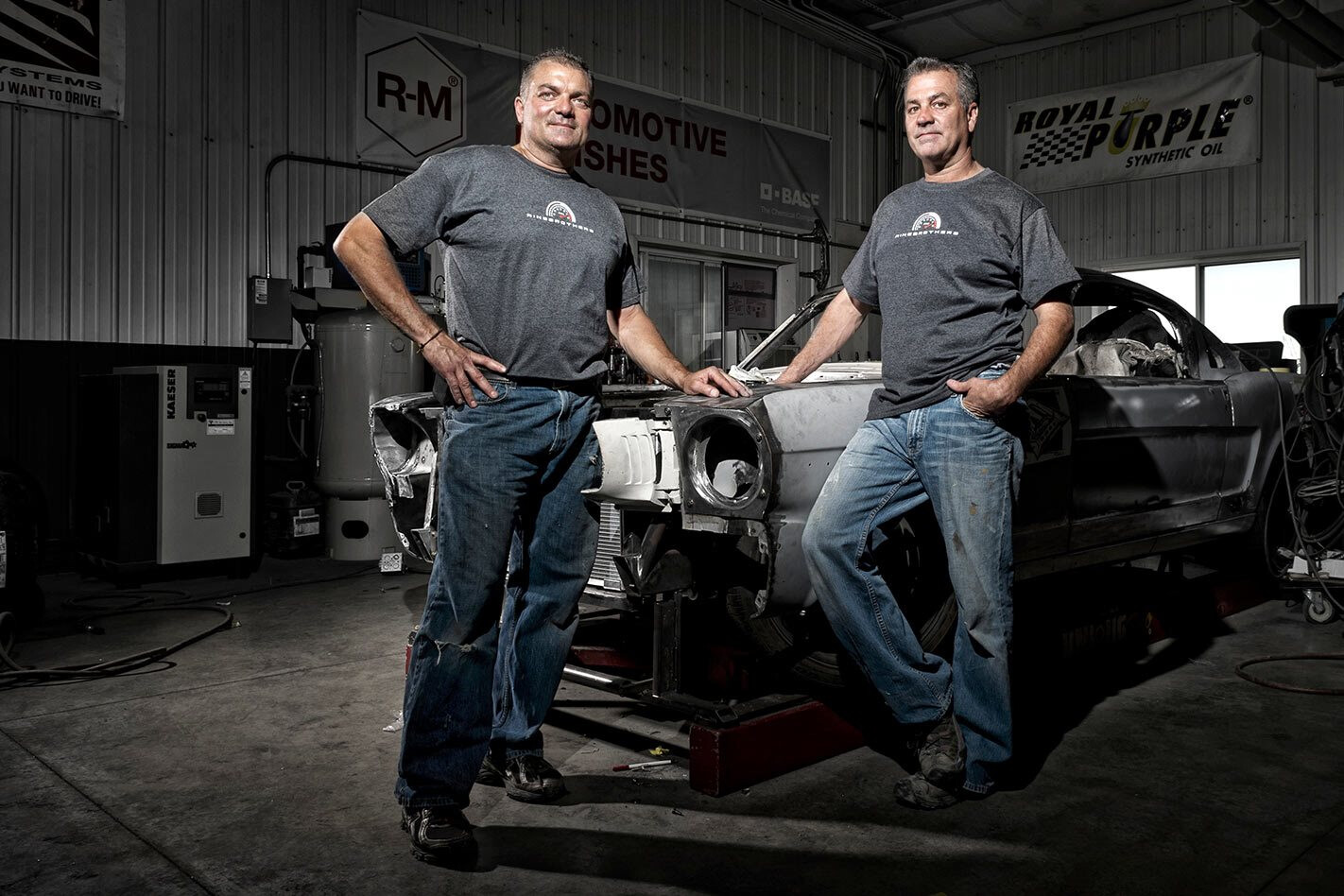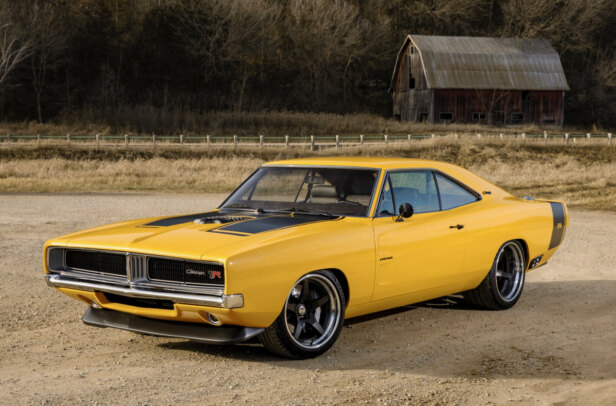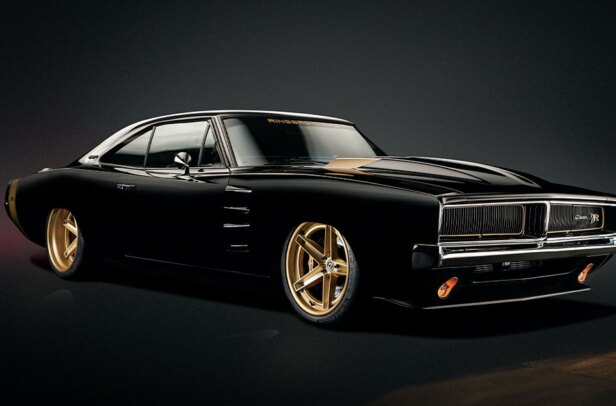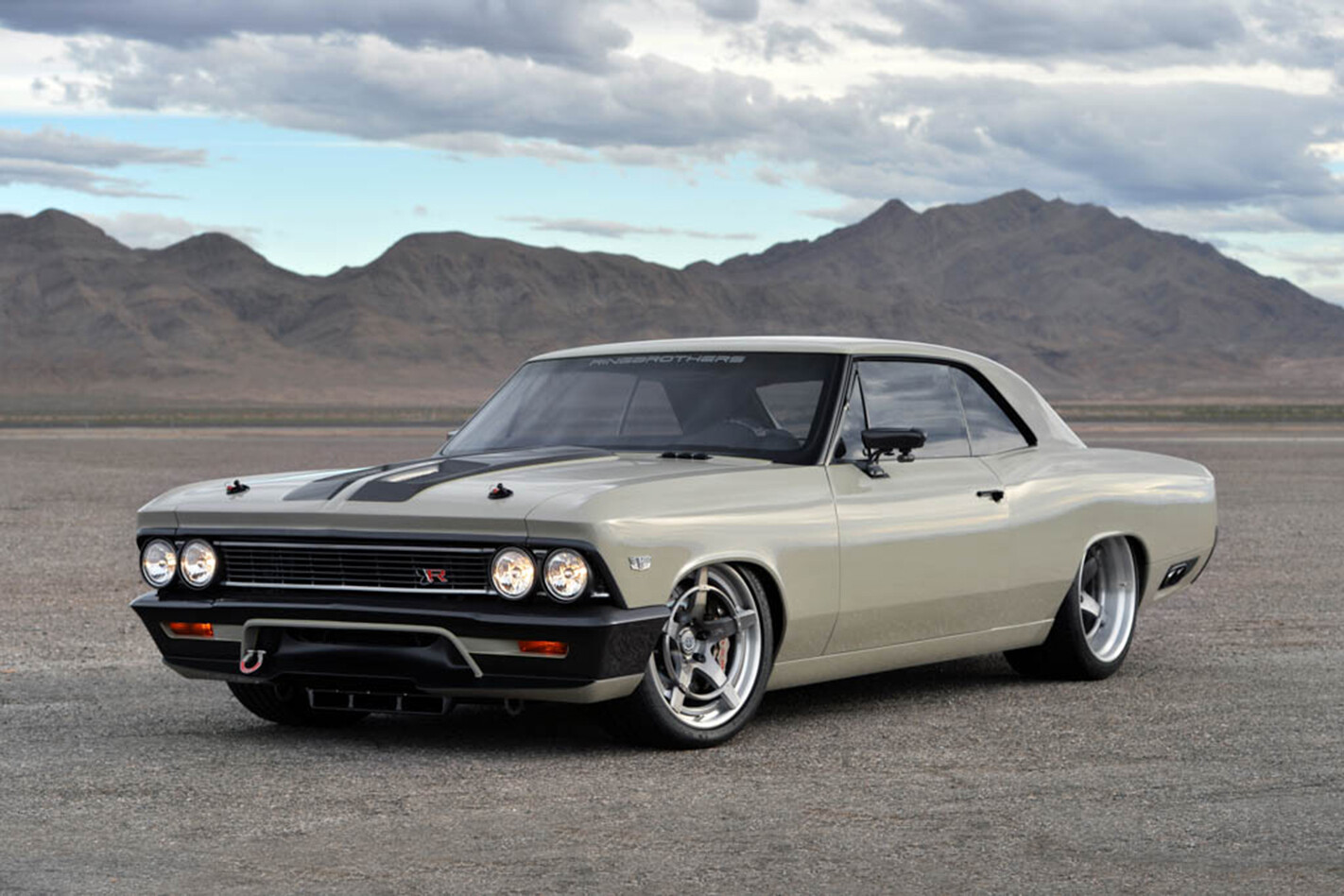This article on the Ringbrothers was originally published in the May 2012 issue of Street Machine magazine
SOMETIMES, when you’re listening to the radio you hear a song you’ve never heard before, yet you immediately know who the artist is. The Rolling Stones, Metallica, Bruce Springsteen are all instantly recognisable.
It’s the same with street machining — Troy Trepanier, Chip Foose, Boyd Coddington and, most recently, Ringbrothers.
It’s really only been the past six years or so that the Brothers Ring have become well-known but their ability to consistently produce groundbreaking and award-winning cars is amazing. How they got to where they are now is a fascinating story, full of heartbreak, deception, tragedy and unrequited love.
No wait, that was the soap opera I was watching — the Ringbrothers story is pretty normal and goes to show that hard work really does pay off. Jim was out, so Mike did all the talking but they’ve been together every step of the way.
When was the first time someone walked into the shop and said: ‘Build me a turn-key car’?
Believe it or not, our first turn-key car was ‘Reactor’, which wasn’t that long ago [2006]. Doug Hoppe came up to us and said: “Guys, every car you do I really like — would you do one for me?” We were like: “Yeah!” That’s where it started. Nobody gives you that opportunity because you own a shop and you say you can do something — you have to earn it. The way we did it was just to keep building what we liked.
Doug Hoppe’s ’67 Reactor Mustang was the first turn-key customer car for Ringbrothers. The 427ci SBF-powered beast won Goodguys Street Machine Of The Year 2007. They won again in ’08 with Erv Woller’s Razor ’69 Camaro
So you were just building the cars for yourselves?
It was just Jim and me building a car, showing it and selling it. We didn’t really know what we were showing, we’d never heard of the Goodguys or anything like that. One day somebody from Super Rod magazine searched me out because we’d sold a car to someone. They’d taken it to Goodguys and it made Top Five Street Machine Of The Year. The magazine wanted to know more about the car but the owner didn’t know anything — he just said: “Some Mike Ring or Jim Ring from Wisconsin” and they tracked us down. That led us into Goodguys and we got involved. We would still continue just to build our stuff, sell it and hopefully break even, and we were happy with that.
And neither of you are formally trained mechanics?
The smell of gasoline, for some reason, was in both of us. Our father owned a gas station but I don’t know if he really had a lot to do with it. As a young boy you always dream of your independence and for us, being in Plain, Wisconsin, a town of 600, it was something that could get us out of that town. Obviously pedalling wasn’t the answer. So we were always infatuated with leaving. We started with a lawnmower motor — anything that could propel us in some way.
I remember the first motor we ever got running, from parts that we had dumpster-dived from a construction company that would throw away old motors and parts. We put one together that actually ran but didn’t have gaskets in it, so it was leaking oil and gas and jumping around on the concrete. It was an amazing thing for us to actually get something to run.
Jim actually built a homemade helicopter as a young boy. My dad got this propeller from a junkyard for a few dollars and my mum was really seriously worried that he would actually get it to fly. He was that kind of kid.
Our father left when I was 12 and Jim was 10 and my mum worked nights. She had an underground garage that was in the house and we would paint cars when she was at work. She would come home and say: “God, the house is going to blow up!” and really be upset with us. Everyone says they started in a garage but we actually started right in Mum’s house!
One of the Ringbrothers trademarks is exposed engines. “Chip Foose is the man but the days of cleaning up and covering motors are over. If you look back at anything we’ve done, we’re all about ‘wires are cool, bolts are cool, motors are cool!’”
Did you do engine swaps as well?
We would pull engines from the rafters. Jim would hold the motor up with a come-along, you know, just a rope, and I would be in there, trying to wedge it in. He’d say: “I don’t know how long I can hold it, hurry up!” and I was trying to line up the headers. Man, we were young — long before we were 16 we were messing with cars in some way.
What was the first car you painted for a customer?
Our first car we painted for someone was a Volkswagen. It was in an old shed at our cousin’s farm and a bird’s nest fell in it right when we were done, right in the middle of the hood. It was pretty depressing trying to pick out a bird’s nest from your first paintjob. If anybody’s ever painted, they’ve had those problems. It’s usually a fly or a bug — not too many times is it a whole bird’s nest.
The wide body ’65 Producer Mustang (SM, Feb ’12) has caused quite a stir. “It’s been a real hit,” Mike says. “We’re trying to produce the parts and put a kit together. We’ve already done the hood and roof but the widened fenders and doors will all be available in high-end carbon”
What was the first car you and Jim built together?
The first car Jim and I shared was a ’72 Torino. At one time we painted it every week for a month. Every weekend we repainted the car a different colour, then drove it to school. We never hit the right colour; I think we might have painted it back to the original colour we tried because we thought that was the best of them all. There were no computers to tell you what something would look like back then.
When did you go into business together?
I went in the navy and was a rescue swimmer; Jim became a crane-operator and started a small restoration business on the side with a buddy. Jim turned it into a body shop, then I bought in, in 1994. I had my first son and was done travelling and I wanted to bring him up in Plain.
We would do collision work but our passion was always there [for building cars]. But with restoration it’s only about what’s wrong with the car — if you went to a show it was only judged on what was wrong with the car; whose had less wrong with it.
Jim and I went to a Catholic grade school that had way too many rules. We got sick of rules. Going to a show where everyone put in so much effort and all they talked about was what was wrong with the cars, that’s crap. We started doing muscle cars, doing our own thing. We didn’t care what people thought.
You’re well known for your CNC-machined stuff; when did you start doing that?
When we were cutting up all those muscle cars, we saw the need for parts that weren’t there. I remember when we developed the hood hinge. You’d be at a car show and you had to shut the hood so you’d have your brother go and push down the corner so it would fit. You’d do this wonderful paintjob but you’d shut the hood and the corner would stick up because the hinges were worn out. We had it down to a science, where people wouldn’t even catch it. You’d distract them a little bit so you could shove that corner down. That’s why we developed the parts and it seemed the more we did, the more people were interested in it.
Do you still have to do the collision work?
We do an equal amount of collision and custom work. Jim and I really work on the cars — you can’t tell if you walk in here that we own it. By still doing collision work we can see how things are put together, especially the European stuff and how they do the interiors. We try to mimic a lot of what they do in regards to texture, and firmness of the seats, to the dash texture, how it’s sewn, how it’s put together. I think it’s of real benefit that we still look at modern cars and use as many of those products as we can.
Mike and Jim’s billet bonnet hinges are now being copied en masse. “It’s hard for us,” Mike says. “We spend lot of money R&Ding stuff like that, to make sure it works. Then someone buys it and has copies made in China. Now we’re introducing parts that aren’t all machineable, to make it harder to copy”
When you modernise interiors, you keep them sympathetic to the muscle car era. How?
Our goal is to make it look like a manufacturer built a prototype. You know how they show a prototype that’s super-bitching but then the bean-counters get involved and it doesn’t look good any more? We try to give people what Ford or GM may have done originally.
How important is colour?
There are so many cars I’ve seen in bare metal and thought it’s just the most amazing thing I’ve ever seen. Then they paint it and I just want to throw up. There are better fabricators and better painters than Ringbrothers, that’s a fact. I think what we’re really good at is finishing it in a way that’s intriguing, different and detailed. For whatever reason, I think people lose it at the end and I think I can help them with that.
Does the Ringbrothers name help with getting collision work?
We don’t even have a Ringbrothers sign on the door. Locals don’t know what we do. They know us for who we are in the church or whatever, but as far as what we do, they just think: “Oh, they’ve got some fast cars burning the tyres and the cops are over there chewing them out.”
The cops keep saying: “Aren’t you guys too old for this?” Can you get too old for this?
Does Jim really test the cars before giving them to the owners?
There’re black marks outside our shop that you could trip over! Every car Jim gets, the paint isn’t even dry and he’s sideways in it.
You did get out of Plain, to Spring Green, Wisconsin. Is that far?
Well, it’s seven miles but Jim and I both travelled extensively, me through the Navy, and we both worked for a big environmental engineering firm. But there’s no place like home, like where you grew up. I think everybody feels they’ve grown up to be a good person and you want that for your kids and you feel the only place you’re going to get that is where you lived.
My wife’s from San Francisco, where it’s all about what you have and what you drive. I kept judging myself on material things and I hated the feeling I had inside. Where we’re from, it has a really old German influence and most people brought up here, if they didn’t have the money, they didn’t purchase it. That’s why it’s pretty rock-solid and stable, the economy has always been good and there’s a good work ethic. For those reasons we wanted to raise our kids here. We wanted to get away and then we found we wanted to be back here. Except for the winters!
Did you always agree on things?
Ah, no. We’re constantly arguing about what looks good. It just depends who’s got a stronger feeling at the time. That’s one thing about it. You have to have the ability to tell somebody: ‘It doesn’t look good.’ You can talk yourself into a lot of things but you have to be honest in this business on what looks good and what doesn’t.
And who does what?
I do the bodywork. Jim does more fabrication, all the wiring and a lot of the design. We work with Sean Smith on the design but a lot of it is Jim’s ideas. Jim is very artistic. He loves the outdoors — Jim wants to be in the woods, he wants to build waterfalls and ponds. He’s off the wall, he doesn’t think normally and that’s what some of our arguments are about. I’ll argue that I don’t like it and his words to me are: ‘You don’t like it because you’ve never seen it.’ When he says that, then I know that he might be onto something.
Is building cars getting easier?
If you pulled one of our cars apart, Jim has pre-thought all the wiring, down to which way all the wires are going to run. He pre-hangs hangers so nothing is hanging off sheet-metal or drilled. All of that’s done already, every stud is put in that car to hang the loom, his wiring is meticulous. It’s the same with brake lines, everything. There’s no going back to drill a hole. Well, not very often anyway.




Comments